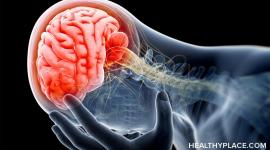Panic Attack Symptoms, Warning Signs of Panic Attacks

Panic attack symptoms reach their peak after approximately 10 minutes, but the entire panic attack can endure for 20 to 30 minutes – rarely lasting more than 60 minutes. The symptoms are so extreme and intense that people who suffer from panic attacks live in constant fear that they will have another, which negatively impacts their quality of life over time.
What Are the Common Panic Attack Symptoms?
Common panic attack symptoms develop abruptly and can occur anywhere, usually without warning. You may have a panic attack while shopping in the mall with friends, driving your car, on your morning jog, or while sitting at the dinner table at home.
Panic attack symptoms come with a host of intense physical sensations. Symptoms you may feel include:
- racing heart rate
- shortness of breath
- chest pain
- numbness or tingling sensations
- dizziness
- faintness
- chills
- nausea
- hot flashes
- tightness in the throat
- difficulty swallowing
You could also have an intense fear of:
- dying
- going insane
- losing control
- having a heart attack or choking to death
These symptoms, especially when occurring abruptly and out of the blue, indicate that you are probably in the midst of a full blown panic attack.
Signs of Panic Attacks
Signs of panic attacks are not the same as symptoms that are only felt by the individual having the attacks. According to Alicia E. Meuret, a psychologist at Southern Methodist University in Dallas, "A study based on 24-hour monitoring of panic sufferers while they went about their daily activities captured panic attacks as they happened and discovered waves of significant physiological instability for at least 60 minutes before patients' awareness of the panic attacks." Patients report these attacks as unexpected and out of the blue, but the recent study, referred to by Dr. Meuret, points to the presence of "subtle physiological instabilities", or physical changes, that the patients were not aware of.
These physical signs of a panic attack occurred before the onset of the attack. For example, the study showed that patients were chronically hyperventilating (breathing audibly and rapidly), but were unaware they were doing so. Other subtle physical signs include sweating, trembling and hot and cold flashes. The study findings are significant because they may help doctors and mental health professionals understand more about what brings on a panic attack, which can lead to more effective treatments for sufferers.
Both men and women can suffer from panic attacks, but panic attack symptoms include more of a tendency to avoid situations that may provoke anxiety and they recur more frequently. Panic attack symptoms in women result in the use of professional medical care more often than in men. Regardless of gender, if you experience panic attacks, seek medical help for your symptoms. Effective panic attack treatments are available. There's no reason to suffer in silence.
APA Reference
Gluck, S.
(2012, January 17). Panic Attack Symptoms, Warning Signs of Panic Attacks, HealthyPlace. Retrieved
on 2025, December 27 from https://www.healthyplace.com/anxiety-panic/panic-disorder/panic-attack-symptoms-warning-signs-of-panic-attacks



